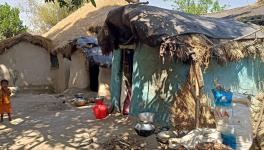Is Land-Mafia Encouraging the Eternal Fires of Jharia?
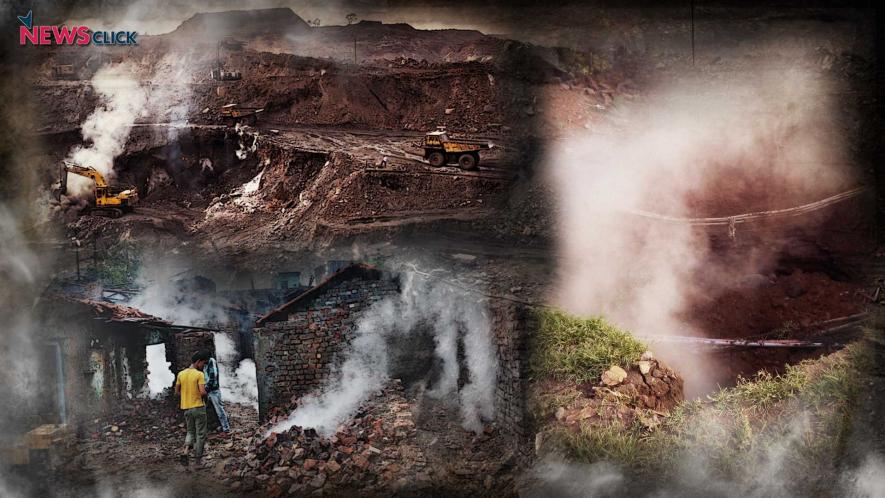
Newsclick Image by Nitesh Kumar
Jharia coal field – India’s largest coal reserves situated in Dhanbad district of Jharkhand – has been burning for over 100 years and, currently, spans nearly 67 mining areas roughly covering over 160 square kms. It poses threats of cave-ins and gas spills for the population living above or nearby, and rail transport, including the key Dhanbad-Chandrapura line. It is official described as uncontrollable and of natural origin.
But local residents are alleging that it is being encouraged to by a nexus of government officials, politicians, power brokers and land mafia get land vacated to favour corporate bodies and avoid rehabilitation of displaced.
They allege that with an aim to fulfil Prime Minister Narendra Modi’s dream of doubling India’s coal production to 1.5 billion tonnes by 2020 (of which 90 percent is likely to come from open-cast mines), the thrust is only on production and profit, with little regard for safety.
“The fire is in fact dug out. When the fire spread in residential areas, the residents evacuate the place. And once they abandon their houses, the government gets the land. The government is working in collusion with the corporate sector. They are making it easier for the corporate sector to come here, acquire land, set up factories and earn as much money as they want at the cost of the common man,” Ashok Agarwal, president of the Jharia Coalfied Bachao Samiti, told Newsclick.
He further alleged that any government that comes to power adopt the same strategy. “The idea is to get hold of coal. They are non-interested in people. The country is already over populated. If the people’s safety has to be looked into, a lot of money has to be spent that the government wants to avoid. They want the fire to spread. Whether any compensation is to be given, it is a long end story the authorities will think on later,” he added.
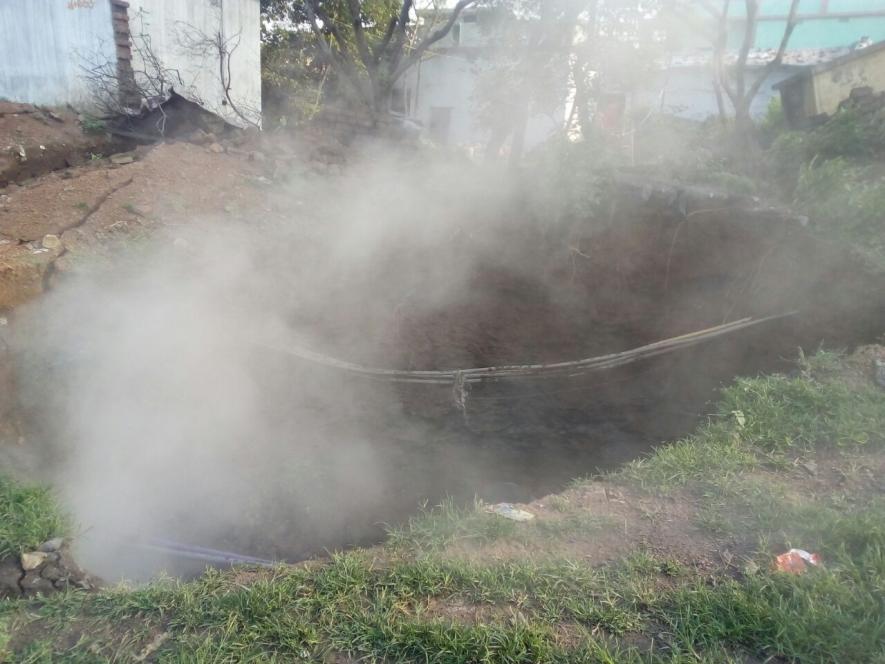
Locals levelled a very serious allegation that the government in collusion with private corporate entities was “deliberately allowing the inferno to strengthen and spread in residential areas so that people abandon their houses because of fear and migrate to other places”.
Directorate General of Mines Safety (DGMS), responsible for overseeing the implementation of various legislations on mining laws, is also accused by residents and activists of collusion with the Bharat Coking Coal Limited (BCCL), a subsidiary of the Coal India Limited (CIL). A BCCL estimate suggests that the fires have already consumed about 37 million tonnes of coal. Another two billion tonnes of coal has become inaccessible, resulting in losses worth $220 billion.
Agarwal further said that the safety of only those are taken care of where opencast mining is done. “The government is only bothered about the opencast mining areas that the government has acquired. It is very sad story of the government’s greed and its illegal nexus with corporate entities, land mafia and power brokers,” he alleged adding that the “fire is rapidly spreading in the areas where people still reside and there is no effort to douse it before any accident takes place”.
The deadly fire is approaching the main town of Jharia, which has been kept out of land acquisition. Does that mean the fire will not come here? The fire has been on the periphery of the town and it can enter the town area any time. “When it comes, the government will defend itself by saying that ‘we tried our best, but could not stop it’. That is what the government will say and get away,” said Agarwal whose organisation is fighting a legal battle against the “wilful inaction” of the government is in the Supreme Court.
The problem here is two-fold – the human problem and the land issues. There are around 1 lakh families – say locals – that reside on the periphery of the town. They are supposed to be immediately rehabilitated.
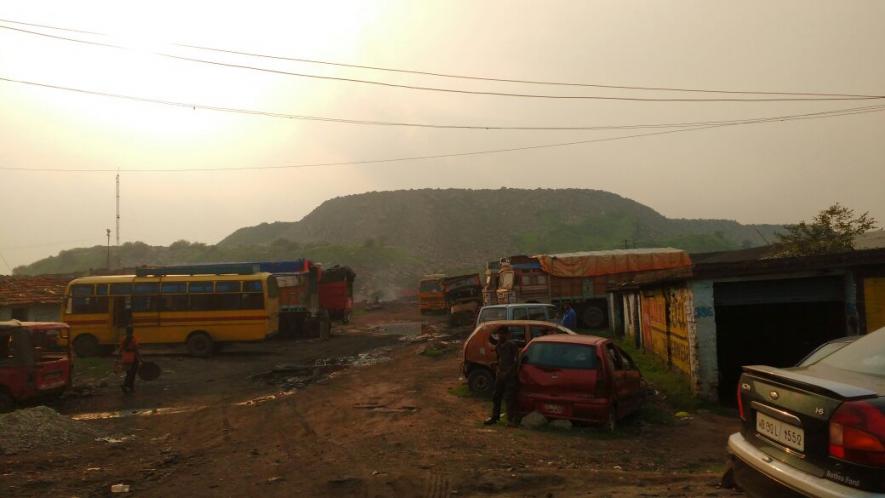
“The government has been able to make only 4,000 houses. Can you compare 1 lakh with 4,000? What is the government thinking? Will the God come and do something here? A disaster can happen any day. Small disasters keep taking place, resulting several deaths. But unfortunately, the government is not even least bothered. After every two year, we hear about an incident like houses went down and some people died. Big splash of news comes in the newspaper and then it dies out,” said a furious local who refused to be identified.
Though the BCCL officials could not be reached for comments despite our repeated attempts, a CIL official, on the condition of anonymity, rubbished the allegation adding that the “Coal India does not do such a thing deliberately so as to push people into fear psychosis. We are a responsible corporate entity.”
An official associated with the BCCL transferred the blame on the government, which, he said, in order to meet the demands of the steel, energy and power industries, do not pay heed to the immense suffering and impact of such exploitative mining activities.
The first subterranean blaze was noticed in 1916 and various reports and studies have sounded the alarm over the years, but authorities woke up and began seeking a comprehensive solution only in the early 2000s.
Majority of the affected mines date back to before Independence and nationalisation. When the coal mines were nationalised in 1971, at least 70 mining areas within Jharia were on fire. The problem later spread to seven more mining zones. The number of affected areas has reduced to about 67, as around 10 fires have been extinguished using different methods.
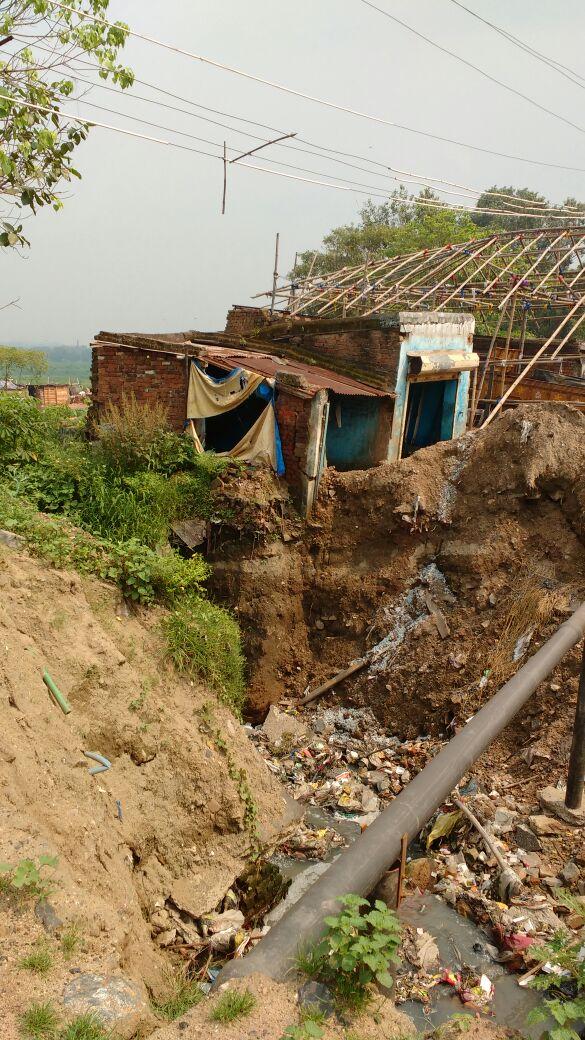
The BCCL does not dig for coal beyond 400 meters in open-cast mines, but most of the mines are not closed or filled with sand, leading to illegalities. In 2010, Ministry of Coal told the Standing Committee of Coal and Steel that there are 49 illegal mining sites in Jharia. According to reports, most of these illegal sites continue to exist. Authorities in the civic bodies in Dhanbad blamed politicians, police and BCCL officials for this thriving illegal mining.
The former MP Haradhan Rai filed a writ petition in the apex court calling for relief for the fire-affected people in Jharia town. It led to formation of a Master Plan in 1999.
An action plan was prepared in April 2003 on the basis of 1999 Master Plan for shifting and rehabilitation. The SC, in 2005, asked the DGMS to prepare a report on the implementation of action plan.
Acting on this petition, the DGMS submitted its report in the apex court in August 2005. It held that as “there were no scientific methods available to check long-term stability, it was possible to certify that stabilized areas could stand unaffected for a long time, say 15-20 years. The committee felt that such stabilisation work could restrict the effect of subsidence and allow some time by which permanent measures like evacuation of the area could be undertaken.”
Get the latest reports & analysis with people's perspective on Protests, movements & deep analytical videos, discussions of the current affairs in your Telegram app. Subscribe to NewsClick's Telegram channel & get Real-Time updates on stories, as they get published on our website.













